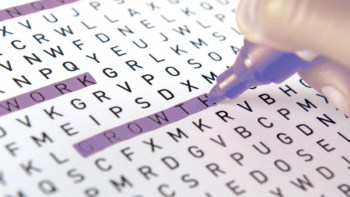
A new toolbox for sophisticated quantum simulators, in which qubits can directly communicate through so-called “topological radio channels”, has been proposed by physicists in Germany and Spain. Researchers led by Alejandro González-Tudela at the Max Planck Institute for Quantum Optics in Garching constructed the theory by transferring the principles of topology from condensed matter to photonics.
Topology has become an incredibly influential branch of mathematics in recent years. In geometric terms, it describes how an object can easily be transformed into another object with the same number of holes, without cutting or gluing. In condensed matter, meanwhile, topological materials display similar geometries on the molecular scale, which gives them diverse mechanical and electrical properties.
Recent studies have explored how the principles of topology can be transferred from condensed matter to photonics, potentially allowing researchers to induce exotic properties of light by engineering topological materials. In this new study, González-Tudela’s team – which included physicists at the Institute of Materials Science of Madrid – showed that a variety of unprecedented quantum optical phenomena can emerge when these topological photonic systems are coupled to quantum emitters.
The researchers started by describing a simple model in which a line of photon-emitting qubits is coupled to a one-dimensional topological photonic waveguide, and the emission frequency of one qubit lies in the energy gap where no electron states can exist in the solid. In this situation, the bound state of the qubit becomes chiral, meaning it can only be located on either the left or right side of the emitter. The end result is that information can only flow in one direction, leaving the other direction completely dark.
From this model, González-Tudela and colleagues propose a toolbox for allowing two specific, distant qubits to communicate with each other through a so-called topological radio channel. By tuning the topology of the waveguide to induce specific chiral bound states, particular pairs of qubits could be consciously chosen to interact with each other on these different channels.
This principle addresses a key challenge for quantum simulations: how to account for specific interactions within highly complex many-body systems. Using current simulation techniques, such as ultracold atoms trapped by an optical lattice, it is incredibly difficult to direct the flow of information between emitters.
The toolbox proposed by the team could allow for significant improvements to these techniques, providing a way to account for the intricate webs of long-range interactions between qubits. With further research into how their ideas can be implemented, González-Tudela and colleagues hope that the technique could help to explore the diverse behaviours of quantum many-body systems in unprecedented detail.
- The full results are published in Science Advances



